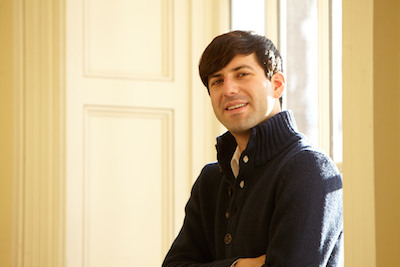 Hometown: Manalapan, NJ, USA
Hometown: Manalapan, NJ, USA
Undergraduate school/major: Wharton School at the University of Pennsylvania / BSc in Economics with Concentrations in Finance and Real Estate
What was your work experience/background before coming to the GSD?
I worked for three years at McKinsey & Company, where I focused my time charting economic development strategies for cities in North America, the Middle East, and South East Asia. There I developed a strong interest in using land use and transit policy as tools to promote economic growth and sustainable communities. As a result, I joined the New York City Mayor’s Office of Long Term Planning and Sustainability as a Policy Advisor on land use issues. While there, I authored the Housing and Parks chapters of the 2011 update to PlaNYC, the city’s twenty-year sustainability agenda. I also developed a series of tools to systematize the City’s approach to sustainability, including a model that optimized legislative strategy for changing City heating oil rules, a climate change natural hazard risk assessment model, as well a framework to evaluate the relative sustainability impacts of policy alternatives for the Sheridan Expressway Corridor.
Why did you decide to pursue planning as a career?
I am concerned that our built environment is nearing a tipping point. Before 1950, there were roughly 50 million housing units in this country and because they largely pre-dated the automobile era, their relationship with the street and surrounding neighborhood supported walking as a primary mode. Since 1950, the number has increased to roughly 110 million units, with most built in a way that forces residents to use automobiles for all their transportation needs. Over the next 50 years, we will likely build another 50 million units. This next wave of housing can largely mimic the auto-centric form that predominated since 1950, or instead support travel by a variety of modes. Given the emissions impact of increased automobile usage, the choice here can determine the ultimate sustainability of this nation. It is my ability to impact this choice that has made me want to become a planner.
What made you decide to come to the GSD?
The studio method. I come from a non-design background and I really wanted to ensure that I came out of planning school knowing how to express my ideas visually in a language that those from any background could understand.
What are your main interests in planning and concentration area?
I am interested in how to incentivize the creation of walkable, urbanist and transit oriented development. Practically, this means there are a few concentrations that I am trying to blend together: Transportation and Infrastructure, Housing and Neighborhoods as well as Real Estate and Urban Development.
What has been the most surprising aspect of the GSD?
How wonderful and supportive my fellow MUPs are. In the pressure cooker that is the studio trays, there’s an incredible camaraderie that builds in our class. Even while incredibly stressed, people are very giving of their time to critique work, offer technical advice or even pick up a sandwich for a colleague in need.
What has been your favorite class or project? Why?
First Semester Core Studio, as surprised as I am to say it… I come from a non-design background and the course threw you into a demanding world in which you needed to quickly develop planning ideas and express them visually. For me it was incredibly difficult to learn both the content that I wanted to express, as well as the software I needed to express that content at the same time. At the end though it was a great learning experience, in which I picked up visual representation and communication skills that I find myself using in a variety of contexts.
What did you do over the summer? How did that add to your education and goals?
This summer I worked with the Institute for Financial Management and Research (IFMR) in Chennai, India on creating a replicable model to finance infrastructure in small Indian cities. IFMR had selected Srirangapatna, a town of 25,000 people, as a pilot site. On arriving, it soon became clear that instead of a financing problem we were actually dealing with a planning problem, (the decision of what infrastructure to finance first required a vision for how the town wanted to grow, which in turn required we collect data on the town today). I created a series of base maps and surveys and managed a team of local Kannada speakers to map the city and conduct the surveys. We then analyzed the data to reveal spatial patterns regarding existing patterns of working, shopping, and levels of infrastructure service. IFMR is now using this data to inform a community visioning exercise for how the town wants to grow. Ultimately, they will be creating a replicable process that small cities in India can undertake in order to better plan for, and finance, their futures. The experience exposed me both to planning a developing world concept, and was an excellent opportunity to apply lessons from our urban planning studio to the real world.
What are your career ambitions?
I am looking forward to integrating the fields of finance, real estate and planning to ensure that the next wave of housing is built to support sustainable modes of transportation. Ultimately I would like to create my own consulting firm that would work with project finance teams, real estate developers, and municipalities. By making an economic case for walkable, urbanist improvements to developments, I could help the built environment of this country evolve.
Anything else?
Some of the greatest parts of the GSD experience, from the talks, to the Loeb Fellows, to Beer N Dogs, happen outside the classroom. It is important to know when to take a breather from studio work so you experience this as well.